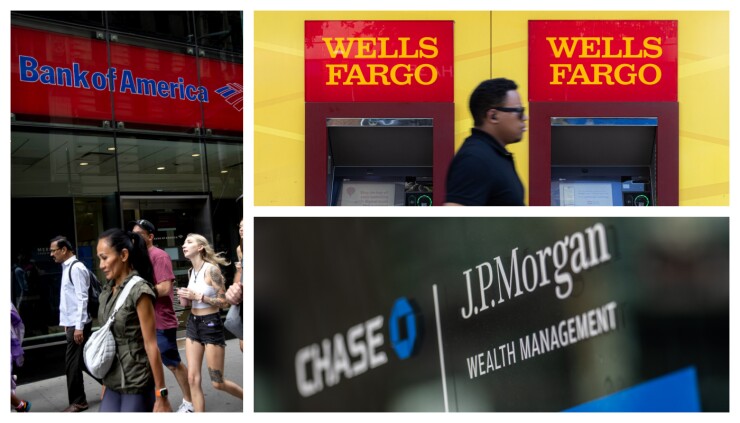
The latest branch-expansion announcement came Monday, when
The Charlotte, North Carolina-based bank said it is on track to add 40 branches to its network in 2024, including its first one in Louisville, Kentucky, this week.
But now
Aron Levine, president of preferred banking at
"It's been a critical element of our consumer strategy to have both a real commitment to industry-leading technology and digital capabilities as well as financial centers that are driving advice and guidance for our clients," Levine said.
Across the U.S., the total number of bank branches has
Even as the adoption of digital banking has accelerated, in part due to the COVID-19 pandemic, in-person options are still important to consumers, including younger generations, said Adam Stockton, head of retail deposits at the consulting firm Curinos.
People generally don't use branches for day-to-day transactions anymore, but they want the option to go to a physical location and speak to a person when they have more complex financial needs, Stockton said.
Major banks like
Achim Griesel, president of the consultancy Haberfeld, said his firm's research shows that 90% of account openings from new households still happen in branches. Those accounts tend to be stickier and hold higher balances, he said.
"I don't think that number would be as high for a Chase or
As of Monday, the nation's largest bank by assets had filed applications to open about 170 locations in 2024 and to close 90 others, per applications with the Office of the Comptroller of the Currency.
In
"Essentially the strategy is to use the branch network to capture the trillions of dollars of money that is being managed by someone else — of clients that have their primary account with us," Pinto said.
In 2022,
But Chief Financial Officer Michael Santomassimo said at a conference this month that the San Francisco-based bank has been hiring and investing in high-deposit markets and should "start to see some more growth come out of that as we go."
Even as Wells is decreasing its net number of locations, it's looking at
Wells is also aiming to use its locations as a boon for its wealth management business, Santomassimo said.
"The last piece is really going after the opportunity for the affluent client base in our retail branch system, which I'd say is almost an untapped kind of market for us," he said. "We have a couple of thousand advisers that sit across the branch system. We've added to that quite a bit over the last couple of years."
Under a 10-year branch upgrade plan,
"We're saying, 'What is the right network? How many centers do we need?'" Levine said. "And then renovating the ones that we keep, closing the ones that have less client demand and opening up new ones where the growth of that market might be sitting. That's how we keep optimizing the channel so that we're serving more and more clients."
Polo Rocha and John Reosti contributed to this article.






